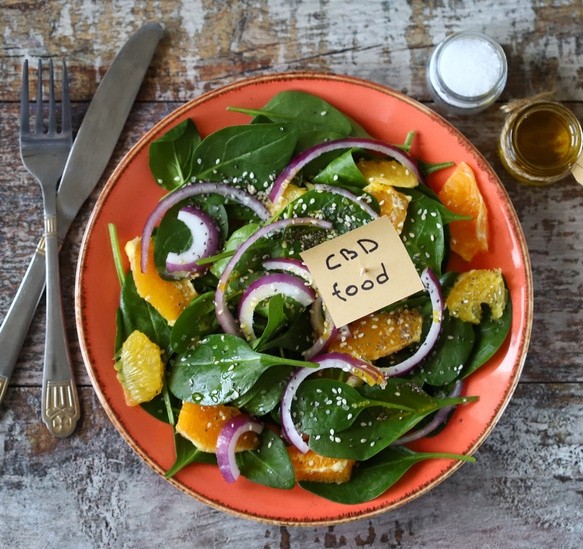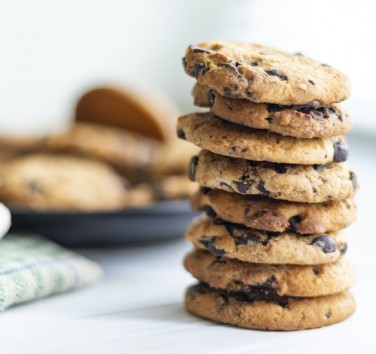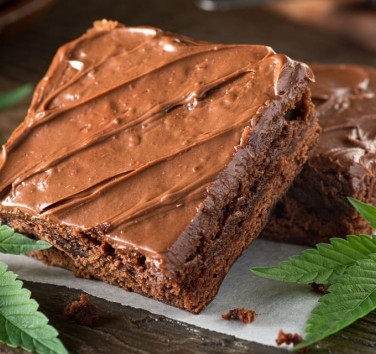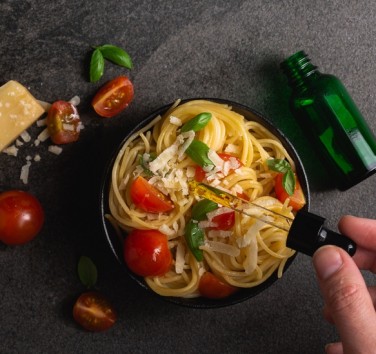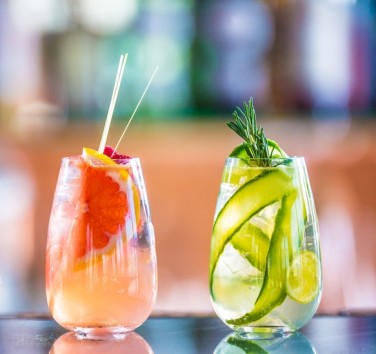Sommaire
- 1. Is cooking with CBD a new trend?
- 2. Why cook with CBD?
- 3. The nutrients in CBD
- 4. What to cook with CBD and how?
- 5. Where to get CBD?
- 6. Some tips on how to start cooking with CBD
- 7. What forms of CBD and what dosages to use?
- 8. Is it possible to overdo it and overdose on CBD?
- 9. How to store CBD and CBD foods?
- 10. Side effects of CBD
- Conclusion: Let's be realistic about CBD in food
Below are the answers to the most frequently asked questions about cooking with CBD
1. Is cooking with CBD a new trend?
As you know, the most popular lifestyle trends usually come from the United States. The Americans are very good at inventing new concepts, but also very clever in the way they market them. The first mention of cannabis-infused foods dates back to 2000 BC in India. The ancestral populations of the East were already consuming cannabis in their drinks during rituals.
The use of cannabis in food in the modern sense thus comes from the American creation of "edibles", homemade or factory-made cannabis foods marketed in California. Indeed, the early pioneers of cannabis culture were instrumental in the expansion of this trend in the early 1960s, with the help of renowned chefs and their unique cannabis recipes
The trend spread to Europe and now the whole world consumes cannabis in its food as if it were a plant like any other. The CBD community has not been left behind. Not only does it propose to add CBD in its recipes, but also to consume CBD edible products (chocolate, candies, honey, tea, coffee...).
2. Why cook with CBD?
Cooking with CBD is a very pleasant way to enjoy the effects of CBD while reducing the risks. Indeed, since it does not produce any combustion, your consumption has no negative impact on your respiratory tract unlike inhalation for example
Also, eating with CBD allows you to mask the sometimes earthy taste of CBD while enjoying your favorite dishes, but also to consume CBD in a more subtle way. Consuming CBD via food and drink will be less aggressive and direct. It can be ideal for people who can't stand inhaling CBD through the flower or ingesting CBD in oil.
Finally, eating CBD food allows you to enjoy the therapeutic effects of CBD while eating delicious preparations. Indeed, if the preparation tips are well respected, the effects of CBD such as relaxation, anxiety reduction, anti-inflammation... will be effective, even if the effect is lighter than another type of consumption.
3. The nutrients in CBD
CBD seeds have impressive nutritional contributions thanks to their cannabinoids, which make them a very interesting food in the kitchen. Beyond cannabinoids, CBD contains other nutrients and beneficial elements, including terpenes and amino acids
Terpenes are aromatic compounds made by many plants, including hemp. Depending on the plant from which CBD was extracted, different terpenes can be found in CBD, giving it a unique flavor.
In addition, CBD also contains all 20 amino acids, which are organic compounds that our bodies need to grow and function properly. 9 amino acids are classified as essential and cannot be manufactured by the body. Instead, these amino acids are obtained via food, CBD for example.
In addition to amino acids and terpenes, CBD oil contains a number of minerals and nutrients:
-
Thiamine (vitamin B1)
-
Riboflavin (vitamin B2)
-
Niacin (vitamin B3)
-
Pyridoxine (vitamin B6)
-
Folate (vitamin B9)
-
Vitamin E
-
Calcium
-
Potassium
-
Phosphorus
-
Magnesium
-
Copper
-
Iron
-
Zinc
-
Manganese
CBD also contains healthy fats, such as the Omega 6 fatty acid.
4. What to cook with CBD and how?
The variety of preparations possible with CBD is unlimited. You can prepare dishes, desserts, drinks, snacks and many other recipes with CBD. Each recipe will look like its consumer, especially in terms of the dosage of CBD
Our recipes always offer a medium dosage, neither too strong, nor too light, which can correspond to any type of consumer, even people who have never consumed CBD.
Our advice: For your first recipes, go slowly in the doses, then increase your dosage according to your desires and limits
5. Where to get CBD?
To offer you premium CBD of very good quality, we propose you exceptional ranges of CBD on our French e-shop 321 CBD. You will find various CBD oils, CBD flowers, CBD resin, CBD wax and other CBD products
Don't hesitate to treat yourself, delivery is free!
.jpeg)
6. Some tips on how to start cooking with CBD
Once you've invested in a quality CBD product, get the most out of it by following a few key guidelines.
-
Never place CBD oil over direct heat. Heat can change its composition and reduce its effectiveness. If you're using CBD in a stir-fried vegetable dish, add the CBD after they've been cooked. In cakes, do not exceed 320 - 350°C in the oven.
-
Mix CBD oil with other cooking oil to make it more effective. This is because CBD is fat-soluble. This means that your body is better able to absorb it with fats such as avocado oil or coconut oil.
-
Be careful when mixing CBD with alcohol. If you're enjoying a cocktail with your CBD-infused meal, don't plan on driving. The effect can be more intoxicating than usual.
-
Always tell the people you share your CBD concoctions with. They have a right to know the composition of what they are eating. Consent is important.
7. What forms of CBD and what dosages to use?
Regarding drinks, CBD flower or CBD resin are the two most commonly used forms. After crumbling them, you can add them to your brews and drink them as you would tea.
For salads, CBD in oil is usually added to the dressing. Others will add the crumbled flowers as a garnish
In baked goods, CBD oil is ideal in the batter. The trick is not to exceed 320-350°C of heat so that the oil does not evaporate.
As for the dosage of CBD in your preparations, it will be specific to your consumption and your preferences. CBD works differently depending on your weight. The result will also depend on your purpose of use (anxiety, sleep, pain, etc.), your gender and how your body reacts
Do a few trials to find the right dosage. Start low, then gradually adjust. Starting at 15 mg seems fine and can go up to 60 mg if you are a confirmed user.
8. Is it possible to overdo it and overdose on CBD?
Consuming too much of anything is inherently bad. Even eating too many bananas can cause indigestion. In the case of CBD, it is almost impossible to overdose on CBD
Clinical studies have found that humans can handle up to 1,500 mg/day, which is a huge amount you'll never get in your house at once
Furthermore, the World Health Organization (WHO) has confirmed that CBD is safe for humans
9. How to store CBD and CBD foods?
Store CBD foods in a cool, dark place. Carry them in a pouch or glass storage boxes. Avoid contact with water during storage.
10. Side effects of CBD
The side effects of CBD are rare and depend on the individual who suffers them. However, some effects such as nausea, dry mouth and headaches can be distinguished. If they appear, they often subside after a few uses.
Conclusion: Let's be realistic about CBD in food
CBD can work differently for different people and may require much higher or lower doses for some people
So keep in mind that consuming CBD in food will greatly mitigate its effects. It is therefore a light consumption and without headache. Don't expect to have the effects of a space cake made with cannabis (THC).
Don't think of CBD as a food that will make you high when you eat it, think of it as a superfood full of good nutrients.
When cooking with CBD, you have to learn to let go. CBD is not about precision, and cooking is not a rigid art. The two come together for the sake of your imagination.
➛ Check out more CBD recipes. Our entire line of CBD products at 321 CBD.

